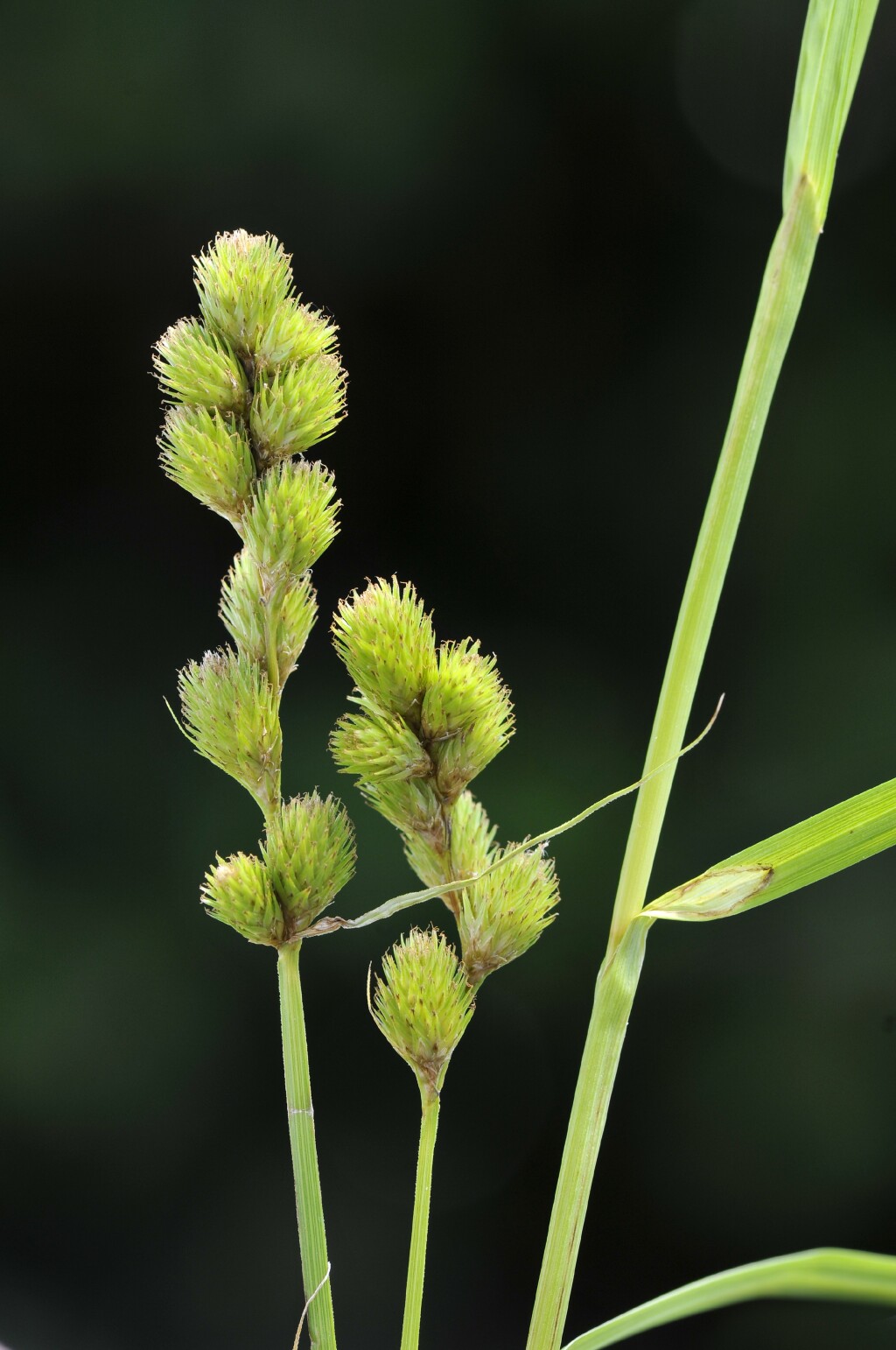Carex tribuloides var. tribuloides
Blunt Broom-sedgeDensely tufted. Culms erect, trigonous, smooth, longitudinally ribbed, 50–100 cm long, 2–3 mm diam, the vegetative culms sometimes branched. Leaves usually shorter than culms, 15–40 cm long, 2.5–7 mm wide, mid green, dull, lower surface slightly paler; sheath green and veined; ligule 4–8 mm long, apex rounded. Inflorescence narrow, ascending or erect, 2–5(–8) cm long, with 6–15 spikes; lowest involucral bract shorter or longer than inflorescence. Spikes short-pedunculate, spikes solitary at nodes, ovoid-oblong to globose, spreading to erect at maturity, 6–12(–16) mm long, 4–8 mm diam.; spikes with female flowers above male flowers; female glumes lanceolate, apex acute to acuminate, white hyaline or silvery brown with green midstripe, the basal male flowers inconspicuous; female glumes (1.9–)2.5–3 mm long, narrower than and half as long as utricles; utricles (3.0–)3.5–5.5 mm long, 1.1–1.5 mm diam.,ovate-lanceolate to ovate-elliptic, with 3–6 dorsal nerves and 2–4 ventral nerves (which may be faint), glabrous, green to light brown; beak 1–1.3 mm long, with apex bifid, winged and ciliate-serrulate almost to the tip; 1.4–2 mm from apex of achene to apex of beak; style 2-fid. Nut lenticular, oblong-ovate, 1–1.8 mm long, 0.6–0.9 mm diam., fawn to light brown. Flowers in late spring-summer.
GipP, WaP. Native to the eastern part of the United States. Known in Australia from a single 2009 collection from Gellibrand River, near Princetown, in south-west Victoria, where currently localised, and growing in swampy native vegetation.
Carex tribuloides is a member of section Ovales, which is represented by ca. 85 species, many of which look very similar and are difficult to distinguish from each other. In Australia C. tribuloides var. tribuloides can be very easily confused with C. scoparia, which is currently only known to be naturalised in Tasmania (however, the identity of the Tasmanian plants requires confirmation). C. tribuloides var. tribuloides differs from C. scoparia in having white-hyaline or silvery brown female glumes (1.9–) 2.5–3 mm long, and not having the utricles winged to the base. In C. scoparia the female glumes are hyaline brown, 3.4–4 mm long, and the utricles are winged to the base. The leaves in C. scoparia are generally also narrower (1.4–3.5 mm wide). C. tribuloides is also very similar to C. leporina from which it differs in having the female glumes (awns, if any, excluded) uniformly shorter and narrower than the utricles at least in middle portion of spikes, and the utricle beak is winged, whereas in C. leporina the female glumes are longer or shorter, wider or narrower than the utricles, and the utricle beak is unwinged. In Australian plants of C. leporina the female glumes are usually dark brown, brown or red brown with green or paler midrib, compared with the female glumes of C. tribuloides var. tribuloides which are white-hyaline or silvery brown with green midrib.
 Spinning
Spinning